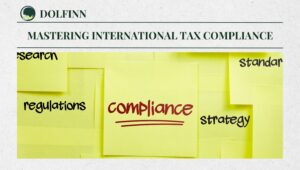Mastering Internal Controls for ASC 842 Compliance: A Comprehensive Guide
Introduction
The adoption of ASC 842, the new lease accounting standard issued by the Financial Accounting Standards Board (FASB), represents one of the most significant accounting changes in recent history. This standard reshapes how companies account for leases on their financial statements, requiring heightened attention to detail and robust internal controls. While the technical aspects of implementation often take center stage, a critical area that deserves equal focus is the design and maintenance of effective internal controls.
In this guide, we delve into the essential internal control considerations for ASC 842, offering insights into planning, implementation, and sustaining compliance. Whether you’re just beginning your journey or refining your processes post-adoption, this resource provides actionable advice to ensure your internal controls align with the inherent risks of lease accounting.
Key Areas of ASC 842 Internal Controls
To establish a sustainable ASC 842 compliance process, it is imperative to focus on the following four key areas:
1. Entity-Level Controls
Entity-level controls set the foundation for an organization’s governance, risk management, and compliance practices. When it comes to ASC 842, these controls are critical for overseeing the lease accounting process.
Key Considerations:
- Management Oversight: Ensure that management and the audit committee actively oversee the implementation of ASC 842. Their involvement should include understanding the implementation roadmap and assessing the adequacy of internal controls.
- Control Environment: Foster a culture of accountability by defining clear roles and responsibilities for those involved in lease accounting.
- Risk Assessment: Identify and address risks associated with the adoption of ASC 842, such as errors in lease classification, valuation, and disclosure.
Actionable Tip
Conduct regular training sessions for the management team and audit committee to ensure they remain informed about ASC 842 requirements and risks.
2. Technology Considerations
Technology plays a pivotal role in lease accounting under ASC 842. Companies must ensure that their chosen software or spreadsheet solutions are supported by robust internal controls.
Key Considerations:
- Software Implementation: Evaluate whether the software solution is capable of handling the complexities of ASC 842, including lease classification, modifications, and reassessments.
- Spreadsheet Limitations: If using spreadsheets, establish controls to mitigate risks such as formula errors, version control issues, and unauthorized access.
- Data Integrity: Implement controls to validate the accuracy and completeness of lease data inputs and outputs.
Actionable Tip
Perform regular audits of your lease accounting software or spreadsheets to identify and rectify potential vulnerabilities.
3. Pre-Adoption and Day One Planning
The transition to ASC 842 is a significant undertaking, particularly during the pre-adoption and initial implementation phases. Controls designed during this period can impact the efficiency and effectiveness of the adoption process.
Key Considerations:
- Transition Controls: Design controls specific to the transition period, such as reconciling legacy lease data with ASC 842 requirements.
- Timeline Management: Establish controls to monitor the project timeline and prevent delays.
- Cost Monitoring: Implement controls to track implementation costs and ensure they align with the budget.
Actionable Tip:
Create a detailed checklist of pre-adoption tasks, assigning clear ownership and deadlines for each item.
4. Ongoing Business Processes: Day Two and Beyond
Once ASC 842 is implemented, maintaining compliance requires continuous monitoring and refinement of internal controls.
Key Considerations:
- Lease Reassessment: Establish controls to address the risks associated with reassessing lease terms and conditions.
- Judgment Areas: Implement controls to ensure consistent application of accounting judgments, such as lease classification and discount rate determination.
- Audit Readiness: Maintain comprehensive documentation to support financial statement audits.
Actionable Tip
Develop a schedule for periodic reviews of lease agreements to identify potential modifications or reassessments.
Roles of Preparers and Reviewers
A robust internal controls environment hinges on the clear distinction between preparers (those responsible for processes) and reviewers (those overseeing the controls). Effective collaboration between these roles ensures the accuracy and integrity of lease accounting processes.
Key Considerations
- Skill Assessment: Evaluate whether individuals in these roles possess the requisite expertise to perform their duties effectively.
- Role Clarity: Clearly define responsibilities to avoid overlap or gaps in processes.
- Training: Provide ongoing education to enhance the skills of preparers and reviewers.
Actionable Tip
Create a competency matrix to match skills with responsibilities and identify areas for training.
Conclusion
The adoption of ASC 842 is a complex process that demands meticulous planning and execution. Internal controls are the backbone of a sustainable compliance strategy, ensuring accuracy, consistency, and transparency in lease accounting. By addressing key areas such as entity-level controls, technology considerations, transition planning, and ongoing processes, companies can build a robust framework that withstands scrutiny and supports long-term compliance.
Remember, the journey doesn’t end with Day One. Continuous monitoring, training, and refinement of internal controls are essential to staying ahead in a dynamic regulatory environment. Embrace the challenge, invest in your internal controls, and pave the way for a seamless ASC 842 compliance journey.
Frequently Asked Questions (FAQ)
What is ASC 842, and why is it significant?
ASC 842 is the lease accounting standard issued by FASB that requires companies to recognize virtually all leases on their balance sheets. It enhances transparency and comparability in financial reporting.
What are the most common risks associated with ASC 842 implementation?
Key risks include errors in lease classification, inaccurate financial statement disclosures, and incomplete lease data.
Can small organizations rely on spreadsheets for ASC 842 compliance?
While spreadsheets can be a cost-effective solution, they require robust controls to mitigate risks such as formula errors and data integrity issues.
How often should lease agreements be reviewed post-adoption?
Lease agreements should be reviewed periodically, at least annually, or whenever significant changes occur.
How can technology improve ASC 842 compliance?
Technology streamlines lease data management, enhances accuracy, and reduces manual errors. Robust systems can automate processes like lease classification, reassessments, and reporting.
For more information you can visit
- ASC 842 Lease Accounting Explained: A Comprehensive Guide (HighRadius)
- Top Challenges in Implementing ASC 842 and How to Overcome Them (Bridge Point)
- The Role of Technology in Streamlining ASC 842 Compliance (Springbord)
- ASC 842 vs IFRS 16: Key Differences in Lease Accounting Standards (Planon)
- Mastering ASC 480: 3 Critical Insights for Accurate Liability vs. Equity Classification (Dolfinn)
Summary
ASC 842 compliance requires robust internal controls to manage lease accounting effectively. From entity-level controls to technology considerations, this guide provides actionable steps for seamless implementation and sustained compliance.
Latest Posts
- Top Cash Flow Forecasting Tools You Can’t Ignore for Global Businesses

- Mastering Profit vs. Cash Flow: 5 Key Strategies for Financial Success

- 5 Key Advantages and Disadvantages of Outsourced Accounting: Is Outsourced Accounting Worth the Risk?

- Mastering Cash Flow Management in 2025: 7 Proven Strategies for Financial Success

- Mastering International Tax Compliance: 7 Crucial Strategies for Multinational Success

- 5 Common Bookkeeping Mistakes Small Businesses Make and How to Avoid Them

